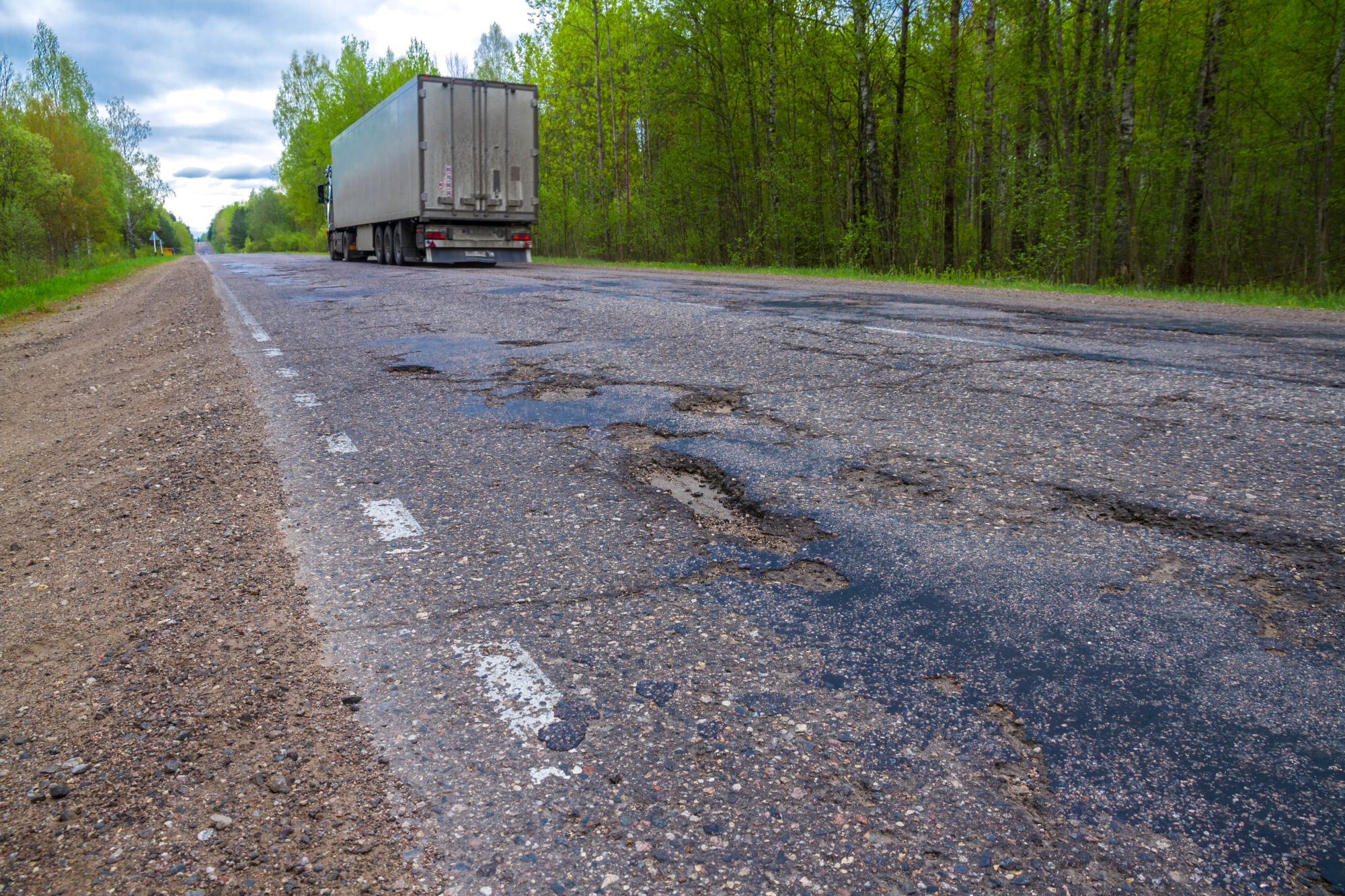
Guest
Як фінансування інфраструктури у Великобританії може вплинути на галузь мобільності
Створено: 02.07.2025
•
Оновлено: 03.07.2025
Після багатьох років несистемних інвестицій та зростаючих заторів уряд Великої Британії зобов'язався виділити понад 700 мільярдів фунтів стерлінгів на розвиток інфраструктури протягом наступного десятиліття - значна частина цих коштів призначена для доріг країни. Від нових вантажних коридорів до найсучасніших цифрових транспортних систем - вплив 10-річної інфраструктурної стратегії на комерційних водіїв і всю індустрію мобільності може бути трансформаційним.
Дороги досягають межі витривалості
Дороги - це лише одна частина транспортної системи Великої Британії, але вони перевозять переважну більшість товарів. [Згідно з урядовими даними (https://assets.publishing.service.gov.uk/media/67dd4f03c6194abe97358bf6/dft-investment-management-srn-25-26.pdf#:~:text=create%20jobs%20and%20housing%20and,at%20the%20end%20of%20March), 81% внутрішніх вантажоперевезень і 75% імпорту та експорту переміщуються автомобільним транспортом, що робить його основою логістики та економіки Великої Британії.
І, незважаючи на те, що за довжиною вона становить трохи більше двох відсотків дорожньої мережі Великої Британії, [Стратегічна мережа доріг (SRN)] (https://https://nationalhighways.co.uk/media/u4apnjvk/nh-srn-simplified-map-2023.pdf) забезпечує 34% усіх автомобільних перевезень, включаючи багато з найбільш важливих вантажних маршрутів з великим обсягом перевезень, що потребують значного часу. Для водіїв, які ними користуються, їх стан та пропускна здатність мають безпосередній вплив на безпеку, ефективність та продуктивність доставки.
Однак дані [Індексу стану доріг (RCI)] (https://www.asphaltuk.org/wp-content/uploads/ALARM-survey-2025-executive-summary.pdf) показують, що близько 24 500 миль - більше ніж кожна 10 миля - мережі в Англії та Уельсі, ймовірно, потребуватимуть технічного обслуговування протягом наступних 12 місяців.
Ряд нещодавніх аварійних закриттів мостів ще більше продемонстрували, наскільки вразливою стала мережа. На деяких ділянках тріщини в опорних конструкціях і бетон, якому вже десятки років, створили небезпечні умови для всіх учасників дорожнього руху - особливо для вантажівок, які часто першими стикаються з ваговими обмеженнями або вимушеною зміною маршрутів.
Уряд відреагував на це створенням нового фонду у розмірі 1 мільярд фунтів стерлінгів для ремонту та відновлення зношених мостів, переходів та шляхопроводів в рамках своєї інфраструктурної стратегії. Це довгоочікуваний крок, який відображає зростаючий тиск на галузь. Для професійних водіїв це може означати менше об'їздів, менше раптових обмежень і менше часу, втраченого на інфраструктуру, яка не пристосована для сучасної логістики.
Але безпека - це не лише уникнення катастрофічних аварій. Це також довгострокова стійкість - забезпечення належного утримання доріг, мостів і шляхопроводів до того, як вони стануть небезпечними. Ця нова увага до обслуговування сигналізує про те, що утримання доріг може нарешті почати відповідати масштабам, розмірам і швидкості транспортних засобів, які від них залежать.

Проблема ямковості
Хоча гучні проекти домінують в оголошеннях, часто саме повсякденний стан дорожнього покриття має найбільший вплив на водіїв. Для тих, хто займається вантажоперевезеннями, вибоїни - це не просто неприємність, а постійна загроза безпеці та дорогий тягар.
Постійний контакт з нерівними поверхнями збільшує знос вантажівок, пошкоджує шини та підвіску, а також сприяє втомі водія. У деяких випадках пошкодження вибоїнами змушували транспортні засоби з'їжджати з дороги для екстреного ремонту, що призводило до зривів поставок і порушувало умови договорів про надання послуг.
Для водіїв ризики є особистими. Намагання об'їхати вибоїни - особливо на вузьких або жвавих дорогах - може призвести до небезпечних маневрів. Додайте до цього погану погоду, обмежене освітлення або щільний графік доставки, і ставки тільки зростають.
В рамках більш широкої інфраструктурної програми уряд виділив [1,6 мільярда фунтів стерлінгів] (https://www.gov.uk/government/news/pm-tells-councils-to-prove-action-on-pothole-plague-to-unlock-extra-cash-and-reveals-48bn-for-major-roads) в рамках Плану змін на модернізацію місцевої інфраструктури, включаючи вибоїни, тріщини та зношеність проїжджої частини доріг. Метою є приведення доріг до більш безпечних та надійних стандартів, особливо на маршрутах з високим вантажопотоком.
Це не вирішить проблему за один день, але знаменує собою зміну пріоритетів - визнання того, що добробут водія починається з базових речей, і що безпечна, комфортна подорож залежить від добре утримуваних доріг.
Для автопарків це означає меншу кількість незапланованих ремонтів, менше страхових випадків і менше часу простою водіїв. Для водіїв це означає менше тряски, менше стресу і менше причин для занепокоєння під час довгої зміни.
Надійна мережа
Добробут водіїв є головною темою сучасних транспортних розмов. Довгі години роботи, запізнення з розкладом та неадекватні умови даються взнаки. Але останні плани уряду дають надію на створення безпечнішої, краще пов'язаної мережі.
По всій Великій Британії об'єкти для водіїв намагаються не відставати від попиту. Кількість місць для паркування часто обмежена, послуги розтягнуті, а багатьом зонам відпочинку не вистачає комфорту і безпеки - особливо для далеких перевезень. Ось чому уряд також [покращує середовище для водіїв] (https://www.gov.uk/government/news/more-than-14-million-in-joint-government-and-industry-funding-to-boost-innovation-and-working-conditions-in-freight): більш безпечні парковки, кращі побутові зручності та реформи планування, щоб прискорити розвиток нових місць.
Водночас зростають інвестиції в центри зарядки та заправки для електричних і водневих вантажівок. Наприклад, компанія Moto взяла на себе зобов'язання встановити понад 300 електричних зарядних пристроїв для вантажівок на 23 автомагістралях, а автостанція Ashford Truckstop перетворюється на великий зарядний хаб для вантажних перевезень через Ла-Манш. Ці об'єкти не просто підтримують рух транспортних засобів - вони надають водіям безпечні, добре обладнані місця для відпочинку та підзарядки.
Якщо ваші водії шукають безпечне місце для зупинки, наш додаток для вантажівок дозволяє їм знаходити та бронювати місця для відпочинку по всій Великобританії та Європі. Дізнатися більше та завантажити його можна тут.

Ціна заторів
Затори на дорогах, непередбачувані маршрути та необхідність встигнути до вікна доставки призводять до стресу та втоми водіїв - і роблять дорогу більш небезпечним місцем для життя.
Масштабні модернізації інфраструктури, такі як перехід через Нижню Темзу, об'єднання автомагістралей A66 і M60 на острові Сімістер, покликані зменшити затори і знизити ризики аварій в одних з найвідоміших "вузьких місць" Великої Британії.
Крім того, все ще існує потреба у впровадженні цифрових інструментів, які підтримують безпечніші та безперешкодніші поїздки. Сповіщення про затори в режимі реального часу, інтелектуальні системи виявлення та краще управління дорожнім рухом допоможуть менеджерам автопарків та водіям швидко реагувати на перебої та змінювати маршрути, де це необхідно.
[Національна програма "Цифрові дороги"] (https://nationalhighways.co.uk/our-work/digital-data-and-technology/digital-roads/) вже закладає основу для створення "розумної" інфраструктури, яка може раніше виявляти небезпеку, більш розумно управляти транспортними потоками і передавати більш чіткі оновлення в режимі реального часу.
Що це означає для мобільності?
Крок вперед для мобільності та добробуту водіїв. Скоординовані національні зусилля, спрямовані на подолання інфраструктурного відставання Великої Британії та модернізацію доріг у спосіб, що принесе користь водіям, які найбільше на них покладаються.
Справжнє випробування буде під час реалізації. Для того, щоб перетворити фінансування на відчутні покращення, потрібно прислухатися до водіїв, вчитися на власному досвіді та вимірювати успіх за відчуттям від доріг, а не лише за їхньою вартістю.
"Ця нова хвиля інвестицій спрямована не лише на скорочення часу в дорозі, - каже Стюарт Віллетс, менеджер з розвитку бізнесу у Великій Британії в SNAP. "Йдеться про побудову транспортної мережі, яка підтримує добробут водіїв, операційну ефективність та перехід до екологічно чистої мобільності. Ми з нетерпінням чекаємо на результати".
Хочете дізнатися, як розвивається мобільність у вашому регіоні?
Використовуйте SNAP-мапу для пошуку послуг та рішень поблизу вас - незалежно від того, якою дорогою ви їдете.



